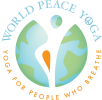Yoga Nidra
Practiced while lying down, yoga nidra is a deep, guided form of meditation. Use this technique for mental and physical relaxation; it prepares your body and mind for a seated meditation practice.
During yoga nidra, your body rests (as if asleep), while your mind remains fully conscious. Although the mind is conscious, it is still and quiet. All internal and external stimuli are filtered out to attain a state of awareness and relaxation that is much more intense than sleep.
Typically led by an experienced teacher, yoga nidra involves complete body-mind relaxation and spiritual rejuvenation. Begin your practice by lying on your back in a comfortable position. Let go of all physical effort and bring awareness to each body part—from your pinky toe to the crown of your head, and everything in between—releasing tension and relaxing more deeply with each breath.
Please practice/listen in on the 4-part Yoga Nidra videos with Donna Lynne Strong Brott.
What is Yoga Nidra?
Have you noticed people are talking about Yoga Nidra, or more likely, closing their eyes with a deep relaxing exhale as they savor the benefits they’ve enjoyed? Take a look at the words: Yoga, “union,” brings to mind the idea of integrating Body, Mind and Spirit, while Nidra means “sleep.” Think of the sleep of a yogi; a totally relaxed physical body with, paradoxically, an awake, alert, and keenly aware consciousness.
Wondering what that looks like in a class? Imagine lying relaxed, as in Savasana, supported with bolsters and blankets. Meanwhile, you are guided through an ancient meditation process to cultivate focused awareness throughout your physical body.
Benefits vary, but everyone leaves with less stress and a renewed sense of well being, while many experience a profound expansion of awareness. Everyone meets and affirms their life’s purpose, many experience a glimpse of enlightened understanding. It enhances focus, learning, and memory. With repeated practice, you’ll find you may have some of each as we seem to get what is most valuable/important and are ready for at any particular time.
This timeless method is simple to do, no experience necessary yet it is so powerful it has been used to assist people dealing with substance abuse, depression, and post traumatic stress disorder (PTSD). It is approved by the VA and has a long history as therapy for returning soldiers.
Yoga Nidra Teaching Resources
Yoga Nidra (Eight Parts) Sample Script
Opening: Share shortly the process practitioners are about to got through. Yoga nidra is a guided deep meditation practiced lying down.
- Settling/Externalizing; preparing for corpse (outer to inner)
- Sankalpa/Resolve/Intention (say in present) – not required, though makes practice more powerful
- Body Rotation (become aware of, think about, rest, notice, or focus on; words to use instead of “relax”)
- Right hand thumb, 1st, 2nd, 3rd, 4th finger
- Right wrist, forearm, elbow, upper arm, shoulder, armpit,Right side of torso, upper right leg, lower right leg, ankle, foot, right toes
- Left hand thumb, 1st, 2nd, 3rd, 4th finger
- Left wrist, forearm, elbow, upper arm, shoulder, armpit,Left side of torso, upper left leg, lower left leg, ankle, foot, left toes
- Top of the head, forehead, right eyebrow, left eyebrow, right eye, left eye, right ear, left ear, right nostril, left nostril, the chest, middle of the chest, navel, lower abdomen, right leg, left leg, both legs together, right arm, left arm, both arms together, the back of the body, the front of the body
- The whole body together (say three times)
- Breath Awareness, keep breath natural (no breath control)
- Count backwards from 54, 27, or 18 like this: mentally, inhale 54, exhale 54; inhale 53, exhale 53…when you forget what number you’re on, start over.
- Make sure to stay awake!
- Opposite Sensations – not required (sensation to feel; create & release/let go)
- Hot/cold, heavy/light, happy/sad
- Visualization (imagine) rapid images and/or take through a journey – not required
- Going from one place to another; in the woods describe path, dark to light/opening to end of journey
- Guide through chakras, base to crown
- Season/time of day
- Sankalpa/Resolve/Intention (say in present) – not required
- Externalization (inner to outer)
Additional Yoga Nidra Resources
Books
- Pause, Rest, Be: Stillness Practices for Courage in Times of Change by Octavia F. Raheem
- The iRest Program for Healing PTSD by Richard C. Miller PhD
- Yoga Nidra by Swami Satyananda Saraswati
- Yoga Nidra a Meditative Practice for Deep Relaxation & Healing by Richard Miller
- Radiant Rest: Yoga Nidra for Deep Relaxation and Awakened Clarity by Tracee Stanley
